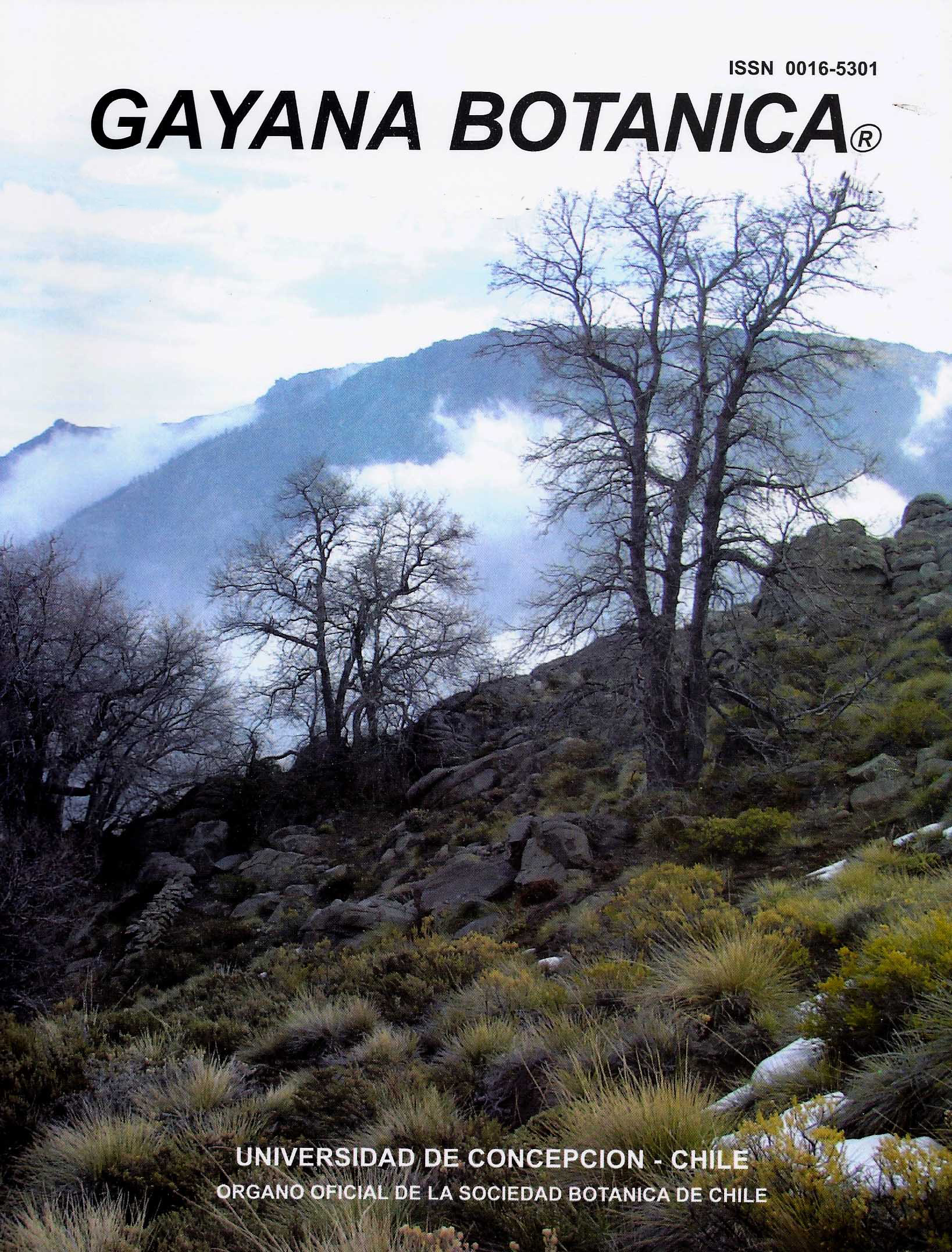Seasonal patterns of growth phenology and nutrient dynamics in four matorral shrubs in Central Chile
Keywords:
central Chile, matorral, vegetative phenology, reproductive allocationAbstract
Chile is one of five global regions exhibiting a mediterranean-type climate regime characterized by evergreen sclerophyll shrublands. These matorral shrublands which dominate the foothills and slopes of the Coastal Mountains and foothills of the Andes in central Chile have received much less study than evergreen shrublands in other mediterranean-type climate regions of the world. Phenological development, growth, and nutrient dynamics of the four widespread matorral shrub species, Lithrea caustica (Anacardiaceae), Colliguaja odorifera (Euphorbiaceae), Kageneckia oblonga (Rosaceae), and Retanilla trinervia (Rhamnaceae), were monitored in central Chile from 1971 to 1975. The four study species all demonstrated growth dynamics and nutrient relations similar to chaparral shrub species of southern California. The species exhibited a sequential development of phenological stages in leaf components following fall precipitation. Colliguaja with relatively shallow root systems showed a sharp peak of new leaf production at the beginning of summer, dropping quickly as summer drought occurred. Another shallow- rooted species while Retanilla initiated leaf production in the late winter, earlier than the other two species, and presented a growth pattern dependent on soil moisture availability. Lithrea and Kageneckia, a more deep-rooted species, initiated leaf production in late spring and continued through the summer. Overall, Chilean shrubs exhibited higher nutrient contents than those of chaparral shrubs in California, suggesting a difference in soil nutrient availability. Reproductive tissues represent a significant portion of the new biomass and nutrient allocation in all four matorral shrubs. Biomass allocation of new tissues (i.e. new leaves, new stems and reproductive tissues) ranged from 8.2% in Retanilla to 16.7% in Colliguaja. Overall, the phenology and nutrient relations of matorral shrubs were similar to those found in chaparral, shrubs indicating that the similar climate regimes can lead to convergence in leaf traits, phenology, and nutrient relationships.



